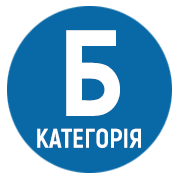SPATIAL THINKING OF STUDENTS OF HIGHER EDUCATION INSTITUTIONS AS AN INDICATOR OF THEIR INTELLECTUAL DEVELOPMENT
DOI:
https://doi.org/10.25128/2415-3605.22.1.16Keywords:
spatial thinking, spatial representations, spatial imagination, graphic activity, intellectual development, dealing with images, drawings, Descriptive Geometry, drawing detailsAbstract
The peculiarities of formation of spatial thinking in students of engineering and pedagogical specialties in the course of study of the graphic cycle disciplines have been substantiated. The definitions of “spatial thinking” and “spatial imagination” are clarified. The legitimacy of spatial thinking as an independent mental process, which is associated with the analysis of spatial features and the relationship between elements of real objects (or their graphic images) and application of these features in resolution of design problems by students of engineering specialties of higher education is mentioned. The content and basic operational units of spatial thinking in undergraduates during their study of graphic disciplines have been described. The dependence of the level of development of spatial thinking of students on the type of spatial images operating in Descriptive Geometry, drawing, engineering and computer graphics lessons has been specified. There has been offered the typology of students of engineering and pedagogical specialties of pedagogical high school, depending on their level of spatial thinking development and ability to explicit spatial transformations. The initial level of spatial thinking development of the students of the first year of study before the study of the cycle of graphic disciplines in higher education institutions has been also analyzed. The prospects of resolution of the issue of increasing the level of spatial thinking in undergraduates as an indicator of their intellectual development have been outlined in the study.
References
Гільбух Ю. З. Розумово обдарована дитина. Психологія, діагностика, педагогіка. Серія: Вчитель і психодіагностика. Київ: НДІ педагогіки і психології, 1992. № 2. 83 с.
Мацко Л. А., Прищак М. Д., Годлевська В. Г. Основи психології та педагогіки: навч. посібник для студентів заочної форми навчання. Вінниця: ВНТУ, 2009. 163 с.
Сидоренко В. К. Інтеграція трудового навчання і креслення: дидактичний аспект. Київ:УДПУ, 1995. 142 с.
Mand Labs. Step by step. URL: https://www.mandlabs.com/current-state-of-stem-education-inus-whatneeds-to-be-done/






